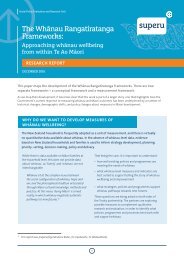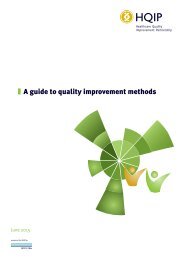2fyY1Py
2fyY1Py
2fyY1Py
Create successful ePaper yourself
Turn your PDF publications into a flip-book with our unique Google optimized e-Paper software.
apps) extract personal information from users, viewing it “as a commodity to be exploited … to gain competitive advantage”<br />
(43, p. 223). Such exploitation includes extensive marketing to children (44).<br />
An overarching principle of the United Nations Convention on the Rights of the Child (2) is that, in actions concerning<br />
children, the best interests of the child are a primary consideration (Art. 3). The Convention articulates children’s rights<br />
to both participation and protection, and the digital environment is no exception. Children’s participation rights include<br />
freedom of expression (Art. 13), freedom of association (Art. 14) and access to information and the mass media (Art.<br />
17). In addition to information and media access, Article 17 also encourages States to develop “appropriate guidelines<br />
for the protection of the child from information and material injurious to his or her well-being”. Furthermore, under<br />
the Convention, children enjoy protection, rights, such as rights to health (Art. 24), privacy (Art. 16) and protection<br />
from economic exploitation (Art. 32). 4 The Convention on the Rights of the Child stipulates that these rights must be<br />
effectively protected (Art. 4), citing parental responsibility to nurture children (Art. 5), but importantly also invoking States’<br />
responsibility to protect and assist families in doing so (Art. 18). Food marketing is also implicated in rights under non-childspecific<br />
instruments, such as the International Covenant on Economic, Social and Cultural Rights (8). For example, Article<br />
12 provides for the right to “the enjoyment of the highest attainable standard of physical and mental health” and states<br />
specifically that nations should take the necessary steps for “the healthy development of the child” and “(t)he prevention,<br />
treatment and control of … diseases”.<br />
More recently, the human rights obligations of businesses (as distinct from States) have been articulated, with guiding<br />
principles and statements on how these apply to children (45–47). The United Nations Guiding principles on business<br />
and human rights (or ‘Ruggie principles’) (45), unanimously adopted by the United Nations Human Rights Council in<br />
June 2011, state that “Business enterprises should … avoid infringing on the human rights of others and should address<br />
adverse human rights impacts with which they are involved” (p. 14). Business enterprises should consult meaningfully with<br />
stakeholders to determine the risks to human rights associated with their activities and take appropriate action to prevent<br />
and mitigate adverse impacts. The Children’s rights and business principles (47) identifies 10 general obligations, including<br />
ensuring that marketing and advertising “respect and support children’s rights” and to “(r)einforce government and<br />
community efforts to protect and fulfil children’s rights”. In the United Nations Global Compact’s list of Good practices per<br />
principle (48), the section on obligations in marketing and advertising includes many examples involving food and beverage<br />
manufacturers.<br />
Taken as a whole, this rights-based framework suggests that children have a right to participate in digital media; that when<br />
they are participating, they also have the right to have their health and privacy protected and not to be economically<br />
exploited; and that not only should parents facilitate these safeguards but States should support parents in doing so.<br />
Therefore, the current challenge of restricting digital marketing of HFSS foods to children should be addressed through<br />
these inter-linked lenses: reducing children’s risk for health problems both now and in the future and securing children’s<br />
right to be protected from undue harm, while at the same time facilitating their right to participate in public life, including<br />
on the Internet.<br />
We return to the central issue of balancing children’s participation and protection rights in media environments below<br />
when discussing implications for policy and legislative action. First, however, we outline the landscape of children’s use of<br />
digital media and the nature, extent and impact of digital marketing of HFSS foods, to underpin the case for expanding and<br />
strengthening food marketing restrictions in the digital era.<br />
4<br />
Handsley et al. (45, p. 131) argue that the reference in Article 32 to work does not exhaust the possibilities for economic exploitation and that “We are participating in the<br />
economy no less when we consume than when we work. Therefore, the exploitation of children as consumers answers the description of ‘economic exploitation’ no less than<br />
does their exploitation as workers. And advertising is central to the process of socializing children as consumers”.<br />
6






